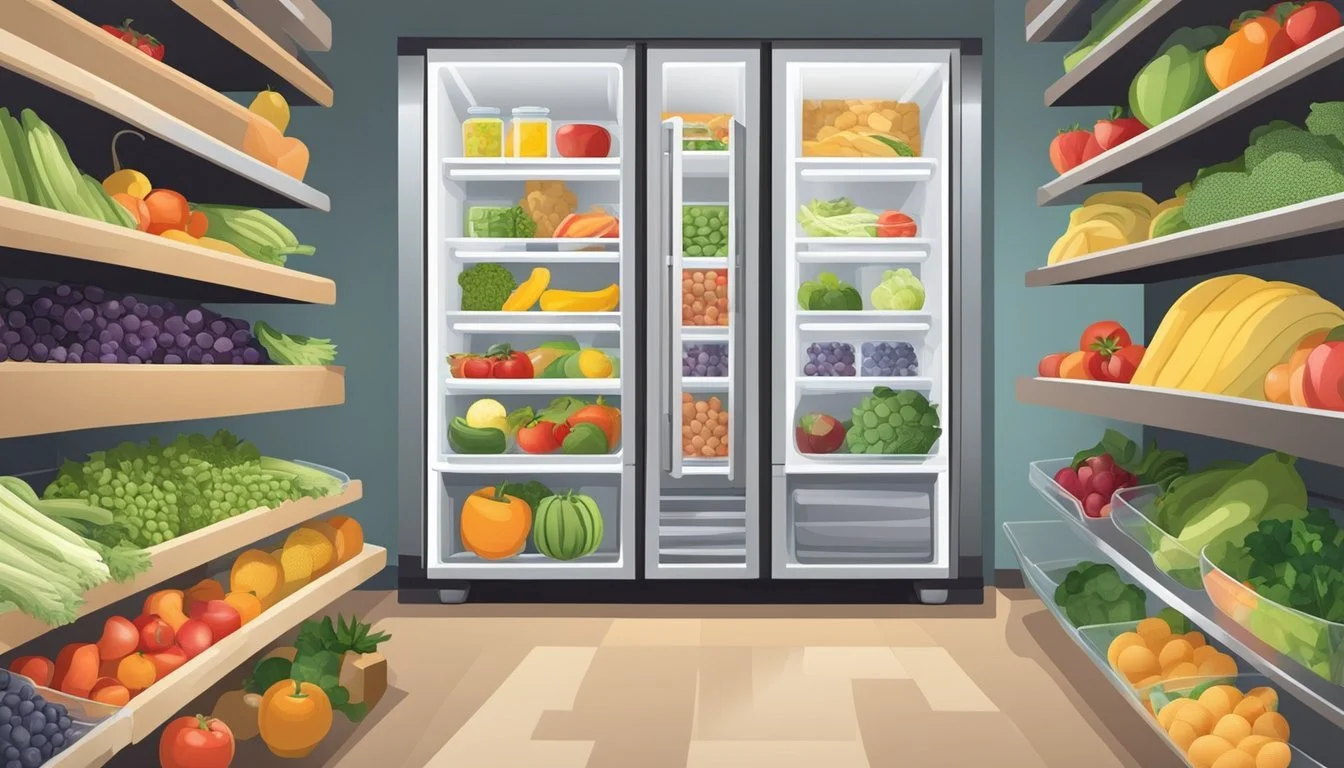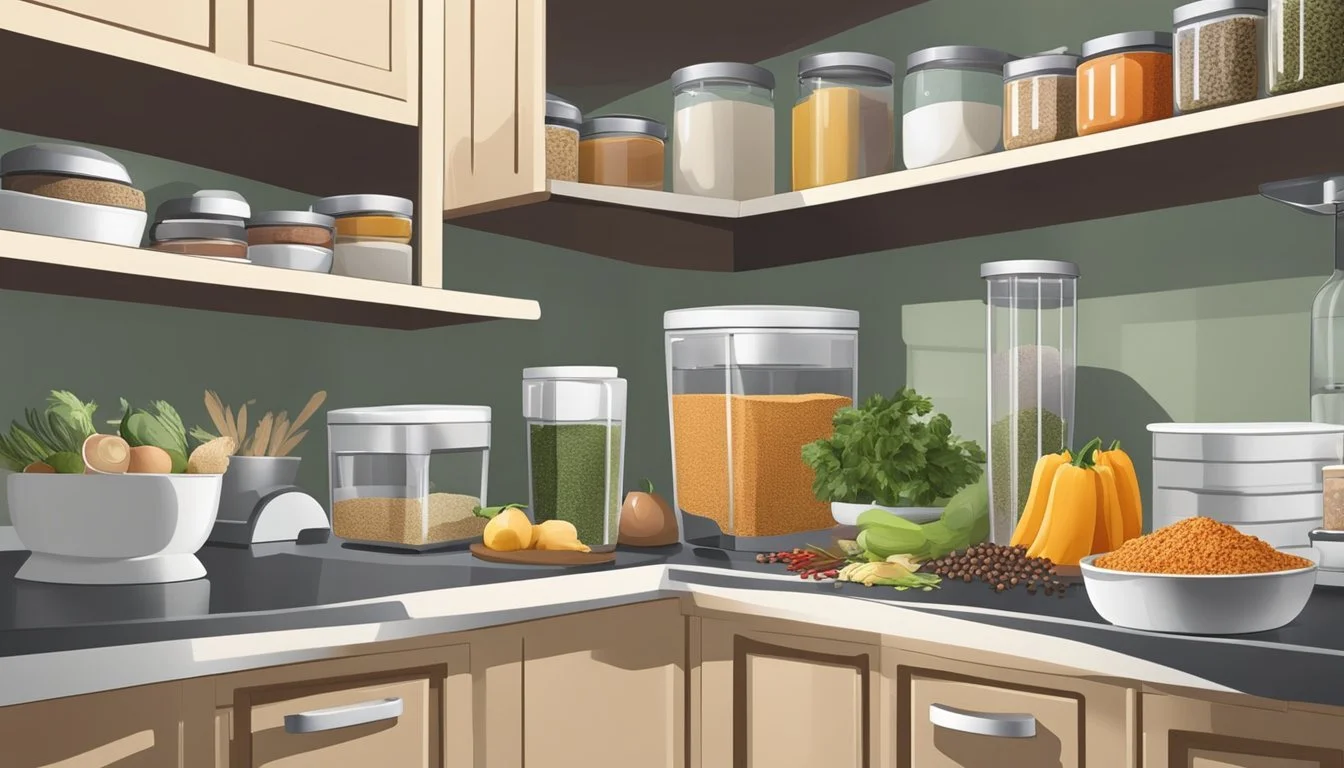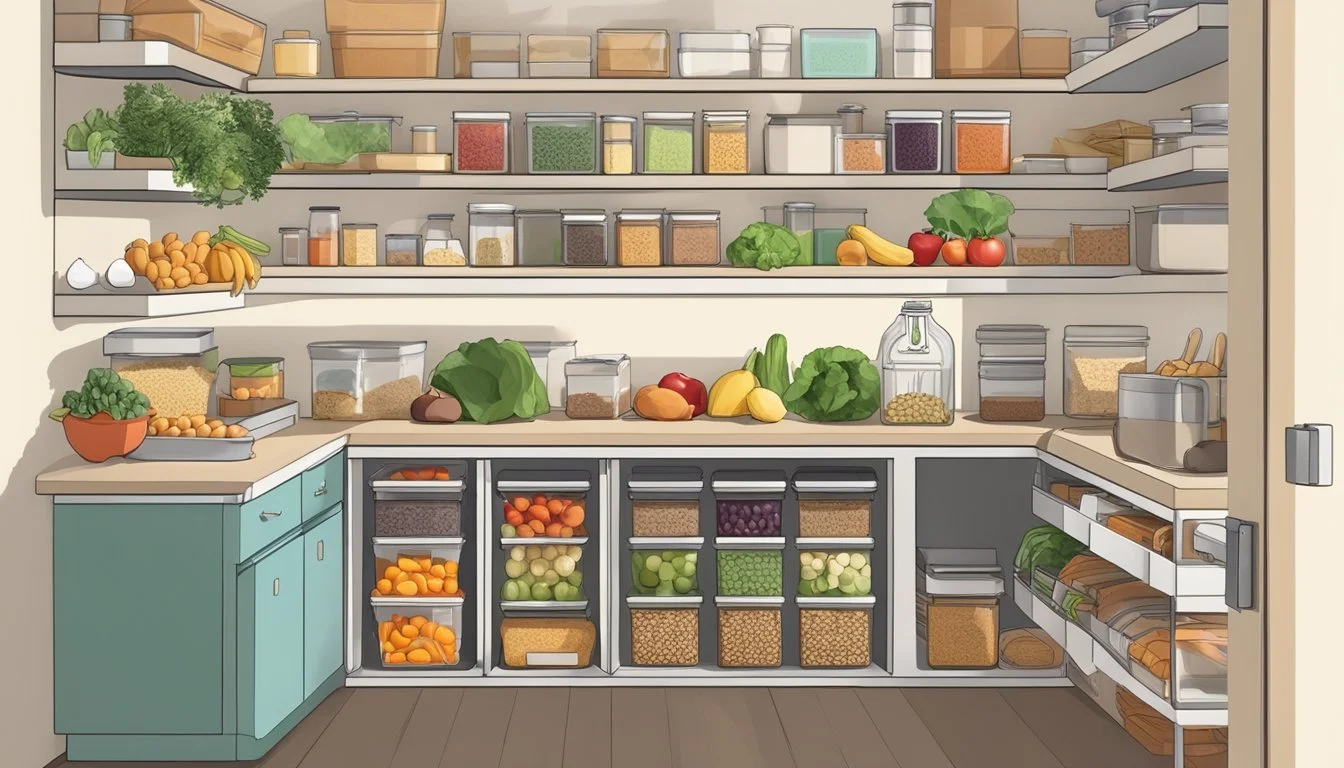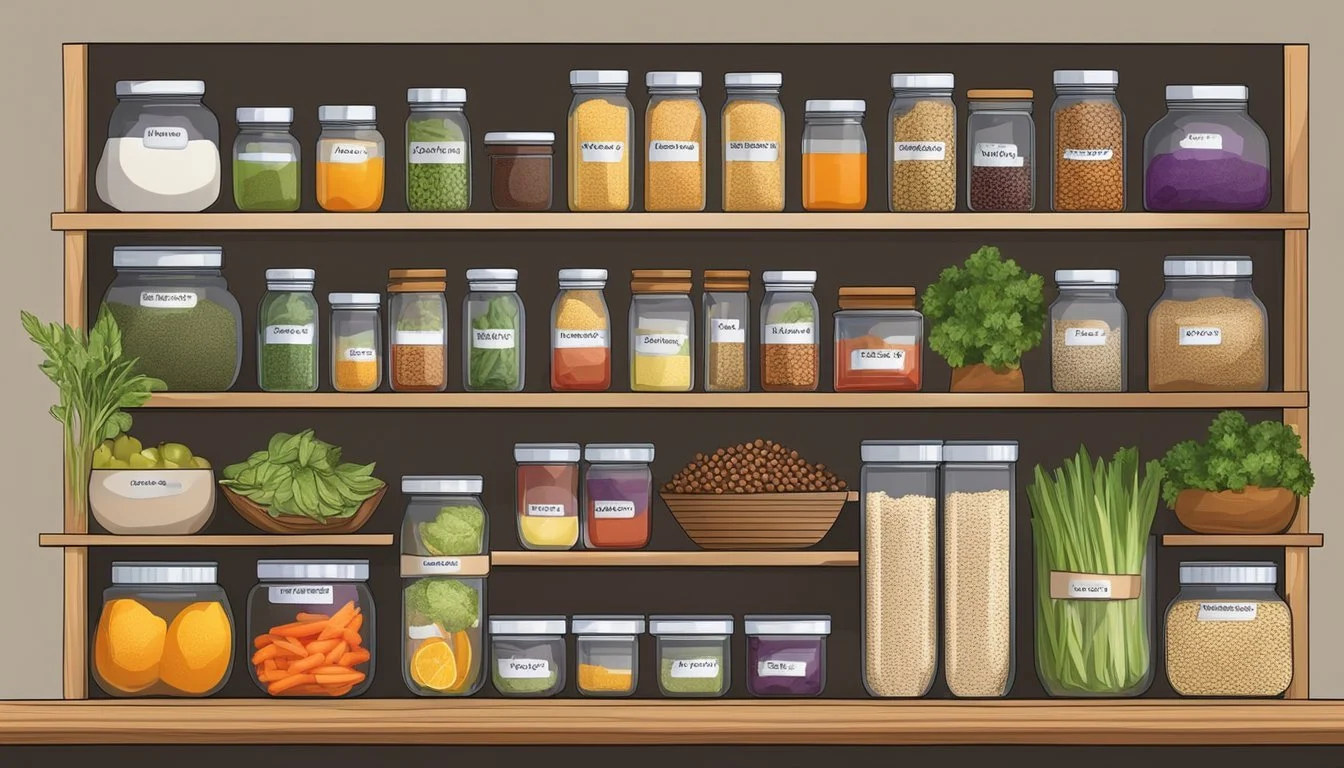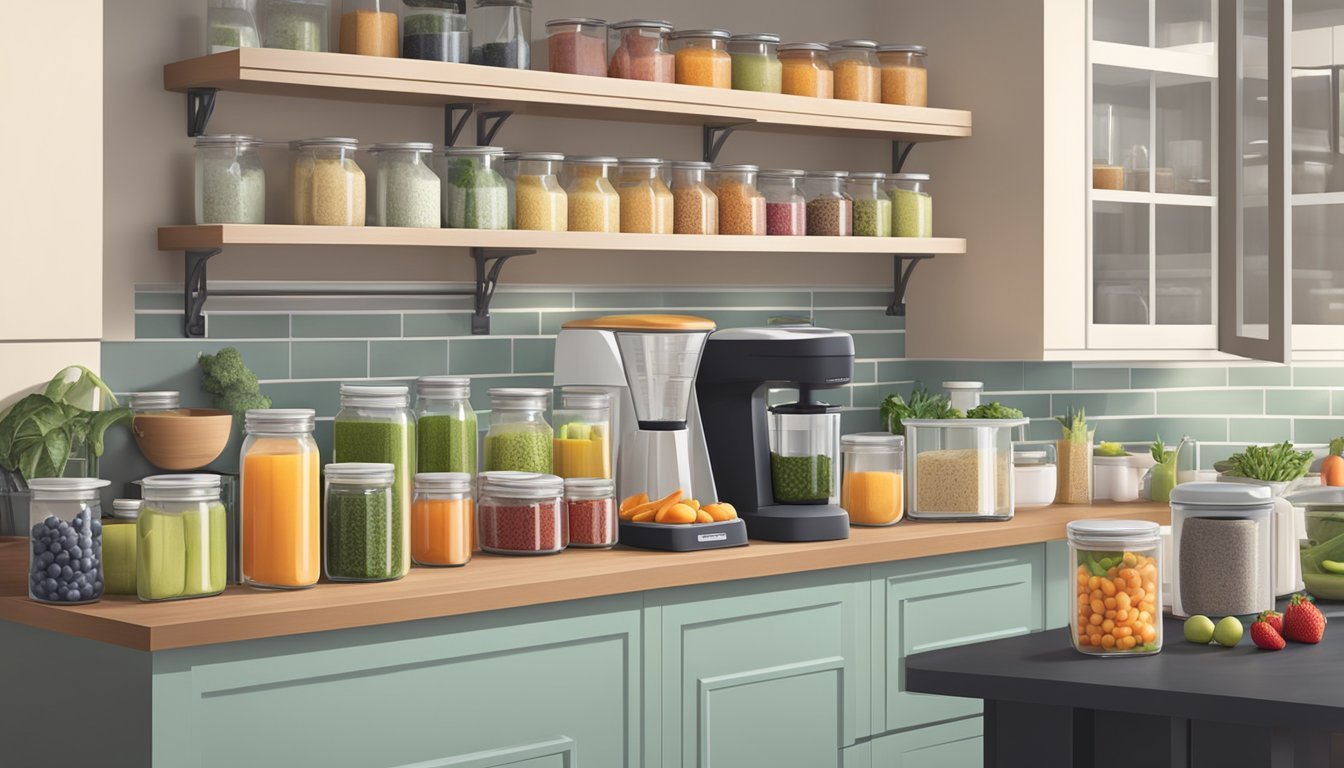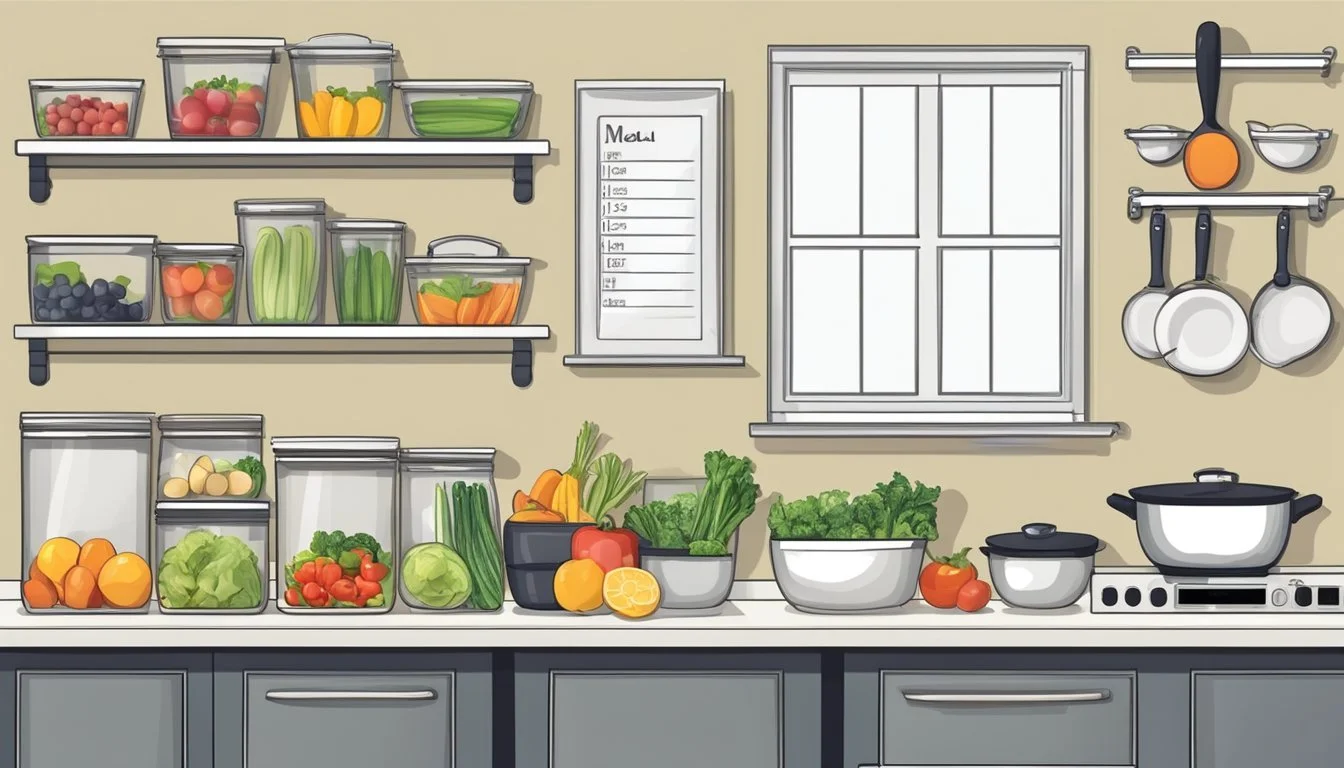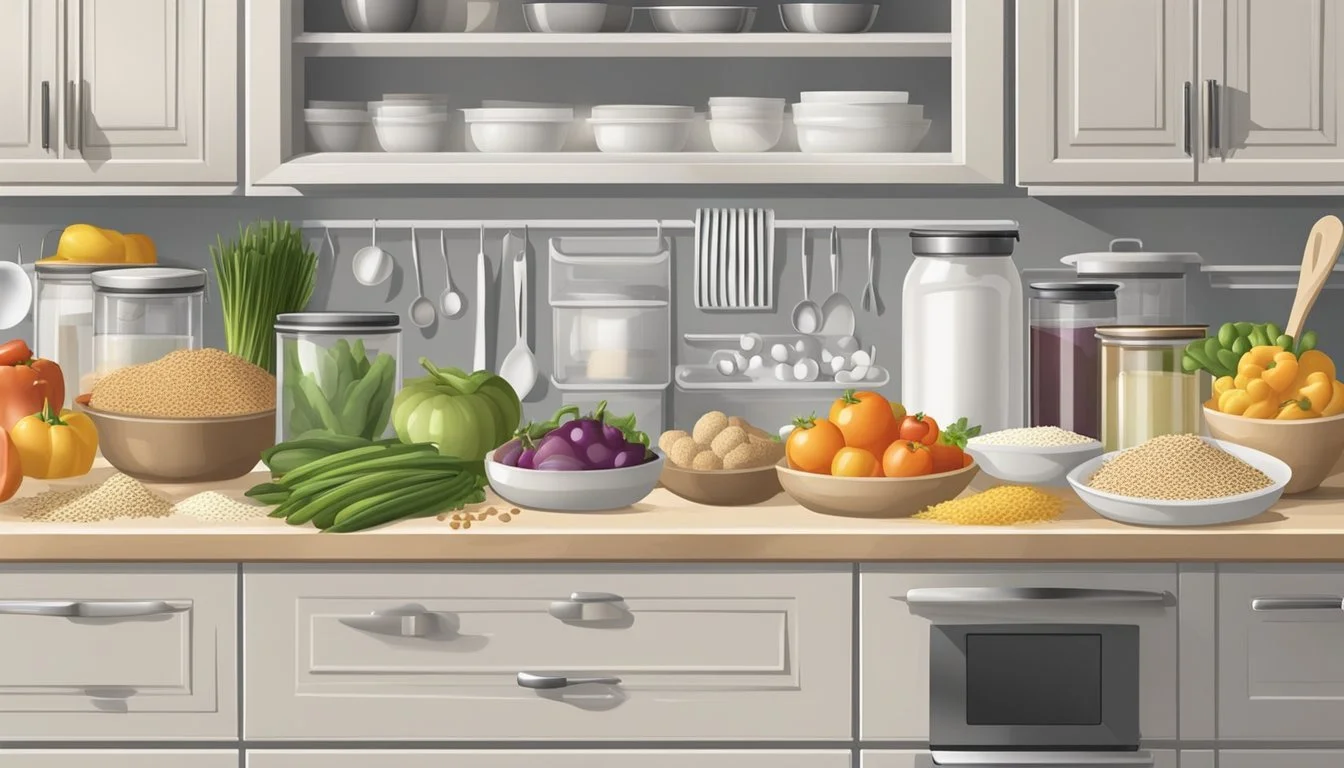The Ultimate Guide to Organizing Your Kitchen for a Body Reset Diet
Streamlining Your Space for Nutritional Success
Embarking on the Body Reset Diet involves a holistic approach to nutrition, which includes reorganizing the kitchen space to align with a new, health-focused regimen. This diet is designed to power metabolism, blast fat, and shed pounds by resetting the body through nutrient-rich meals. The kitchen, often the heart of one's dietary habits, must transform into a supportive environment that fosters the success of this program. Streamlining the kitchen for a Body Reset Diet not only simplifies meal preparation but also encourages sustained adherence to healthy lifestyle changes.
A well-organized kitchen stocked with the essentials of the Body Reset Diet serves as the launching pad for nutritious eating. Staples such as millet, quinoa, buckwheat, red-skin potatoes, cage-free eggs, and free-range poultry take center stage, replacing less nourishing options. Tools and ingredients are positioned for ease and efficiency, crafting an inviting space for the preparation of smoothies and meals rich in fruits, vegetables, and fiber. The strategic arrangement within the kitchen directly supports the program guide's recommended dietary practices, streamlining the process to achieve desired health outcomes.
Creating an environment that reduces the friction of adopting new eating habits is critical for those embarking on the Body Reset Diet. By establishing clear systems for organizing food choices and meal prepping, individuals are poised to effortlessly integrate the Body Reset Diet into their daily routine. A well-arranged kitchen forms the backbone of this healthy lifestyle transformation, ensuring that nutritious food is always within reach and the principles of the Body Reset Diet are easy to maintain over the long term.
Understanding Body Reset Diet
Before delving into organizing your kitchen, it's essential to comprehend the Body Reset Diet. This diet focuses on jumpstarting weight loss, boosting metabolism, and reinforcing energy levels through structured meal plans.
Principles of the Body Reset Diet
The Body Reset Diet centers around a phased approach where smoothies, snacks, and solid meals are introduced in a particular sequence. The initial phase leans heavily on liquid meals to promote digestive rest and metabolic enhancement. As one progresses, the diet accommodates a reintroduction of more solid foods, aiming towards balanced, nutrient-rich meals that support sustainable weight loss.
Phase One: Smoothie-centric diet to "reset" digestion and metabolism
Phase Two: Introduction of solid snacks and meals alongside smoothies
Phase Three: Expansion of solid meals, aiming for three solid meals per day
Benefits of a Body Reset Diet
Adherents may experience several benefits associated with the Body Reset Diet, such as:
Weight Loss: A structured plan can lead to quick and noticeable weight loss.
Increased Energy: Improved meal composition can enhance overall energy levels.
Boosted Metabolism: Frequent, nutritious meals can help in elevating metabolic rate.
It is, however, crucial to ensure any diet is in line with individual health needs and to consult a healthcare provider before commencing the Body Reset Diet.
Potential Drawbacks
Although the Body Reset Diet could be efficacious for some, potential drawbacks should be considered:
Restrictive: Early phases are highly restrictive and may be challenging to adhere to.
Sustainability: It may be difficult for some to maintain long-term lifestyle changes post-diet.
Nutritional Balance: The initial focus on smoothies may not provide the balanced nutrition needed for everyone.
Approach such dietary regimens with caution and professional guidance to ensure health and compatibility with one's lifestyle.
Fundamentals of a Healthy Kitchen
A well-organized kitchen is vital for maintaining a body reset diet, with a focus on ready availability of healthy ingredients and cooking tools.
Essential Kitchen Tools
In pursuing a healthy lifestyle, especially a body reset diet, the kitchen becomes the focal ground. Crucial to this journey are essential kitchen tools designed to make healthy cooking efficient and straightforward. A high-quality blender and food processor are indispensable, simplifying tasks such as pureeing soups and creating smoothies rich with fruits and vegetables. These tools help maintain the nutritional integrity of foods while expediting meal preparation.
Blender: For quick smoothies and soups.
Food Processor: Makes chopping and processing vegetables a breeze.
Food Storage and Organization
Proper food storage and organization are key to ensuring that fresh produce and healthy ingredients are the mainstay of dietary choices. Refrigeration prioritizes visibility of fruits and vegetables, while dry storage should be organized to prevent less healthy options from taking precedence. Using clear containers allows one to see what's inside at a glance, promoting the use of wholesome foods.
Refrigerator Organization:
Top Shelf: Ready-to-eat foods, such as cut vegetables and fruit.
Middle Shelf: Dairy alternatives, lean proteins.
Lower Shelf: Raw ingredients for healthy cooking.
Drawers: Separate fruits and vegetables to preserve freshness.
Pantry Organization:
Healthy Snacks: Front and center for easy access.
Whole Grains and Legumes: In clear, labeled jars.
Herbs and Spices: At eye level to encourage use in healthy cooking.
Organizing your kitchen with the body reset diet in mind means making the healthiest choices the most accessible ones. This approach ensures that maintaining a diet rich in vegetables and fruits while using methods of healthy cooking becomes a seamless part of day-to-day life.
Dietary Components & Whole Foods
When embarking on a Body Reset Diet, focusing on wholesome, unprocessed ingredients is crucial. A well-organized kitchen that prioritizes whole foods can facilitate a diet rich in essential nutrients.
Importance of Vegetables and Fruits
Vegetables and fruits are the cornerstones of any nutritious diet due to their high fiber, vitamin, and mineral content. They should occupy the most space in one's kitchen and plate. For a body reset, it's recommended to consume a variety of vegetables like leafy greens as well as colorful produce such as berries and citrus fruits, which are loaded with antioxidants.
Incorporating Lean Proteins
Lean proteins are pivotal for muscle repair and satiety. One should include sources like chicken, fish, and plant-based options such as lentils and beans. Fish is a particularly good choice due to its omega-3 fatty acids, which contribute to heart health.
Chicken: A versatile protein that can be baked, grilled, or stir-fried.
Fish: Best enjoyed steamed or baked to retain its nutritional profile.
The Role of Healthy Fats
Healthy fats are essential for absorbing vitamins and providing energy. Incorporate sources like avocado, nuts, and seeds into meals. These foods not only add richness and flavor but also come with benefits like improved heart health.
Avocado: Can be sliced into salads or mashed as a spread.
Almonds: Perfect as a snack or chopped into oatmeal for added crunch.
Choosing Whole Grains
Selecting whole grains over refined grains ensures a higher intake of fiber and nutrients. Whole grains, such as brown rice and quinoa, support a healthy digestive system and can maintain feelings of fullness for longer periods.
Brown rice: A staple that pairs well with a variety of dishes.
Quinoa: A protein-rich grain that can serve as a base for salads and bowls.
Creating Meal Plans
Creating a meal plan for a Body Reset Diet involves strategic selection of whole foods for balanced meals and energy-sustaining snacks, as well as efficient meal prep strategies to ensure sustainable healthy eating habits.
Designing Balanced Meals
A balanced meal for a Body Reset Diet should include a variety of vegetables, lean protein, and healthy fats. Each meal should aim to incorporate:
Vegetables: Half of the plate filled with colorful, fibrous vegetables. Aim for variety to get a full range of vitamins and minerals.
Protein: A quarter of the plate with lean proteins like chicken, fish, beans, or tofu to support muscle repair and promote satiety.
Healthy Fats: A portion of healthy fats from sources like avocados, nuts, or olive oil to maintain energy levels and aid nutrient absorption.
A sample meal could be a grilled chicken breast with a side of steamed broccoli and quinoa, drizzled with a tablespoon of olive oil.
Snacks for Sustained Energy
Snacks should focus on whole foods that provide protein and fiber to maintain steady energy levels without spiking blood sugar. Ideal snacks include:
A handful of nuts like almonds or walnuts for healthy fats and protein.
Fruits such as apples or berries paired with nut butter for a balance of fiber and fats.
Veggie sticks like carrot and cucumber with a hummus dip for a crunch and protein boost.
These options keep one satiated and nourished between meals.
Strategies for Meal Prepping
Integral to a successful diet plan is efficient meal prep. Here are a few strategies:
Batch Cooking: Cook larger quantities of recipes at once to save time and ensure consistent healthy eating.
Ingredient Prep: Wash, chop, and store vegetables and fruits immediately after grocery shopping for easy access throughout the week.
Storage Solutions: Use clear containers to store prepped items in the fridge for quick meal assembly.
Planning Ahead: Spend time each week to plan out meals and snacks to streamline the grocery shopping and prep process.
Planning and preparing meals ahead of time make healthy eating decisions effortless and reduce the temptation of unhealthy options.
Special Diet Considerations
When organizing one's kitchen for a Body Reset Diet, individuals must account for specific dietary needs which can range from plant-based preferences to gluten intolerance and food allergies. Proper kitchen organization aids in adherence to these special diets and prevents cross-contamination.
Vegan and Vegetarian Options
In a kitchen catered to vegan and vegetarian diets, it's crucial to designate areas for storing plant-based alternatives. One should allocate shelf space for diverse vegetable proteins, like beans, lentils, tofu, and tempeh. Additionally, dedicating a drawer or a section of the refrigerator to fresh vegetables and fruits ensures they are within easy reach. A variety of seeds such as chia, hemp, and flaxseed, which are rich in nutrients, should be stored in clear, labeled containers to be conveniently added to meals.
Managing Gluten-Free Requirements
For those with gluten-free needs, clear separation of foods is essential to avoid cross-contamination. One can use color-coded containers or dedicated shelves for gluten-free products. Storing items such as gluten-free bread, pasta, and baking ingredients in distinct, labeled bins simplifies meal preparation. Furthermore, keeping a separate set of cooking utensils and toasters for gluten-free foods is a good practice.
Navigating Food Allergies
A kitchen must be arranged to easily access foods that are safe for those with allergies while preventing the risk of allergen exposure. This requires separating and labeling shelves or storage bins for allergen-free items. For instance, nut-free zones can be established if nut allergies are a concern. It is prudent to always have non-dairy, nut-free, and other allergy-friendly alternatives available, clearly separated from potential allergens.
Body Reset Diet Phases
The Body Reset Diet comprises three carefully structured phases, each with distinct dietary patterns. These phases help in kickstarting weight loss, improving nutrient intake, and transitioning into a sustainable lifestyle of healthy eating.
Phase One: The Jumpstart
In Phase One, individuals focus on metabolism-boosting smoothies to jumpstart their weight loss journey. This initial phase lasts for five days, wherein smoothies become the primary meal replacement. It is typically composed of three smoothies a day—each balanced with proteins, fats, and carbohydrates—alongside snacks like nuts or raw vegetables. The purpose is to provide a nutrient-dense, low-calorie diet that promotes digestive rest and detoxification.
Proteins: Whey or plant-based protein powders
Healthy Fats: Nuts, seeds, or avocados
Carbohydrates: Fruits and leafy greens
Phase Two: The Ramp Up
In Phase Two, salads are introduced, and smoothies continue, but the focus shifts. Over the next five days, the dieter begins to reintroduce solid foods into their diet. This occurs by including at least one solid meal a day, aiming to stabilize the metabolism further and prepare the body for a more varied diet. The salads are rich in fiber and nutrients, often with lean proteins and healthy fats included.
Solid Meal Characteristics:
Base: Mixed greens or spinach
Protein: Grilled chicken, fish, or tofu
Dressing: Homemade with olive oil and vinegar or lemon juice
Phase Three: The Maintenance
Phase Three is the final step, focusing on maintaining the healthy habits developed in the earlier phases. For the last five days of the diet, the routine now includes smoothies, salads, and two solid meals. This phase is crucial as it sets the foundation for prolonged healthy eating habits. It incorporates a wider variety of solid foods, emphasizing whole foods and balanced portions.
Solid Food Examples:
Breakfast: Oatmeal with fresh berries and a drizzle of honey
Lunch/Dinner: Grilled salmon with quinoa and steamed vegetables
The Body Reset Diet aims to ease the dieter into a pattern of regular, healthy eating, while not depriving the body of essential nutrients at any phase.
Exercise & Body Reset
When embarking on a body reset diet, exercise is a pivotal component that works synergistically with nutritional changes to enhance overall health and sustain weight loss. A balanced exercise regimen includes resistance training, cardio workouts for metabolism enhancement, and flexibility routines.
Integrating Resistance Training
Resistance training plays a crucial role in a body reset program as it helps build muscle, which in turn can increase resting metabolic rate. It involves exercises that cause the muscles to contract against an external resistance, leading to increased strength and muscle mass. Individuals should focus on major muscle groups and aim for at least two non-consecutive days per week. Here's an effective way to integrate resistance training:
Monday: Upper body workout (chest, shoulders, arms)
Wednesday: Lower body workout (quads, hamstrings, calves)
Friday: Core and back workout
Each session should include 3-4 sets of 8-12 repetitions for optimal muscle engagement and to effectively burn calories.
Cardiovascular Workouts and Metabolism
Cardiovascular workouts are essential for boosting metabolism and promoting sustained weight loss. These workouts increase the heart rate and calorie expenditure, which can help create the necessary calorie deficit for weight loss, while improving cardiovascular health. Suitable cardio exercises include:
Running or jogging
Cycling
Swimming
Rowing
For tangible results, individuals should aim for at least 150 minutes of moderate-intensity cardiovascular exercise per week or 75 minutes of vigorous-intensity activities.
Stretching and Flexibility
Incorporating stretching and flexibility exercises is crucial for preventing injuries and improving overall physical function, especially when the body's metabolism is adjusting to a new diet. Stretching should be included at the end of each workout session to ensure muscles remain limber and recover properly. Examples of flexibility work include:
Static stretches held for 15-30 seconds each
Yoga or Pilates classes
Dynamic stretches as part of a warm-up routine
These exercises not only enhance flexibility but also aid in relaxation and stress relief, which can positively impact one's body reset journey.
Supplements and Superfoods
In considering a body reset diet, it is vital to understand the specific roles that dietary supplements and nutrient-rich superfoods play in enhancing overall health. This section will explore their strategic inclusion in your kitchen organization.
Role of Supplements in Diet
Dietary supplements can fill nutritional gaps that may not be met through diet alone, particularly during a body reset when one is aiming to achieve optimal health. For example:
Multivitamins: Provide a base level of essential vitamins and minerals.
Protein Powders: Useful for meal replacement or supplementation, especially after workouts.
Omega-3 Fatty Acids: Typically found in fish oil supplements, aids in reducing inflammation.
In organizing the kitchen, individuals should allocate a specific area for supplements that align with their dietary goals, ensuring they remain at hand when preparing meals or snacks.
Incorporating Superfoods
Superfoods, while not a scientific classification, refer to foods that are exceptionally rich in vitamins, minerals, and antioxidants. They are invaluable for a body reset diet. Some key superfoods to consider are:
Microgreens: A salad of young greens provides a substantial nutrient boost.
Seaweed: Adds a rich source of iodine and can be included in dishes such as miso soup.
Table: Superfoods and Their Benefits
Superfood Benefit Serving Suggestion Pumpkin Seeds High in magnesium and fiber As a topping in hummus or salads Olives Good source of healthy fats Mixed into salads or as a healthy snack Kalamata Olives Rich in antioxidants, healthy fats Perfect addition to Mediterranean dishes Hummus Offers protein and fiber Accompanied by veggies for a snack Green Onions Add flavor and essential nutrients Finely chopped in microgreen salads
By organizing an area of the kitchen specifically for superfoods, such as a dedicated shelf or counter space, individuals can more easily integrate these nutrient-dense foods into their daily meal prep, ensuring they reap the maximum health benefits.
Instructions for Food Preparation
Preparing food for a Body Reset Diet involves using healthy cooking techniques, incorporating natural flavor enhancers, and following specific recipes tailored for a dietary reset. The instructions below will guide readers through each step to ensure meals are nutritious and support the principles of the Body Reset Diet.
Healthy Cooking Techniques
When it comes to cooking for a Body Reset Diet, one should choose techniques that retain most of the nutrients while limiting the use of unhealthy fats and excessive heat. Here are some suggested methods:
Steaming: Steaming vegetables like sweet potatoes ensures they retain their nutritional value and natural flavors. It is also a quick method that does not require oil.
Baking: Using an oven to bake proteins or vegetables at lower temperatures can prevent the formation of harmful compounds sometimes created at high heat. Sweet potatoes, for example, can be baked at 450° F until tender.
Sautéing with healthy fats: Sautéing with a small amount of extra virgin olive oil or sesame oil can add flavor without overwhelming the natural taste of foods. Keep temperatures moderate to prevent the oil from reaching its smoke point.
Natural Flavor Enhancers
Enhancing the taste of food without resorting to artificial additives or high-sodium content is crucial. Consider these natural enhancers and their applications:
Apple cider vinegar: Adds zest to dressings and marinades, while promoting digestive health.
Lemon juice: Freshens up any dish while providing vitamin C, best squeezed over cooked dishes or mixed into sauces.
Garlic and herbs: Fresh garlic and parsley can elevate the flavor profile of any dish. Crush or finely chop them to release their aromatic oils.
Spices: Ground cumin and mint can be used in small amounts to add depth without adding calories.
Natural sweeteners: A touch of maple syrup can sweeten dishes without refined sugars.
Recipes for Body Reset
Adapting specific recipes for a Body Reset Diet can make the path to wellness tasty and more enjoyable. Each recipe focuses on the inclusion of whole, unprocessed ingredients. Here are a few examples:
Sweet Potato & Garlic Mash:
Bake sweet potatoes until tender, then mash with roasted garlic, a pinch of Himalayan salt and a splash of miso paste for umami depth.
Tomato & Cumin Soup:
Blend roasted tomatoes with cumin, Bragg Liquid Aminos, and a hint of extra virgin olive oil for a rich, yet light soup.
Maple-Glazed Salmon:
Marinate salmon in a mixture of maple syrup, minced garlic, and lemon juice. Bake until flaky and serve garnished with fresh parsley.
In summary, food preparation for a Body Reset Diet involves using healthy cooking techniques, natural flavor enhancers, and recipes that support detoxification and nourishment. By following these guidelines, one can organize their kitchen to accommodate a nutritious and restorative eating plan.
Lifestyle Practices for Sustained Success
Organizing your kitchen for a Body Reset Diet can influence long-term healthy eating and weight management. By creating an environment that supports mindful practices and a low-calorie, nutritious diet, one can achieve and maintain a healthy weight.
Mindful Eating Habits
Mindful eating is central to consuming a healthy diet. One should focus on their food during meals, ensuring they're free from distractions like television. Keeping high-nutrient, low-calorie foods within easy reach in the kitchen can help reinforce these habits, promoting sustained weight loss.
Maintaining a Healthy Weight
Achieving a calorie deficit is often required for weight loss, but maintaining a healthy weight necessitates a balanced approach to calorie intake and expenditure. One's kitchen should stock healthy options such as fruits, vegetables, and whole grains while having tools like a food scale to aid in portion control.
Adapting to Lifestyle Changes
Sustained success comes from adapting the kitchen and eating habits to a healthy lifestyle. The change may include:
Storing unhealthy foods out of sight to avoid temptation.
Prepping meals ahead to control ingredients and portions.
Using visual cues like colored containers for different food groups.
Creating a kitchen conducive to these lifestyle changes supports ongoing health and wellness goals.
Monitoring Progress and Adjustments
Staying on track with a Body Reset Diet involves monitoring milestones and recognizing when adjustments are necessary. It's imperative to keep a close eye on progress to ensure the diet aligns with desired health outcomes.
Tracking Your Diet Progress
One must meticulously record their dietary intake and weight loss journey to evaluate the effectiveness of their Body Reset Diet. Utilizing tools such as:
Food diaries: To note all consumed items, ensuring they meet the USDA guidelines.
Progress charts: Displaying weight changes over time to reflect the impact on metabolism and body composition.
When to Adjust Your Diet Plan
Adjustments to the diet plan should be made when:
Weight loss plateaus, indicating a need to reassess caloric intake or activity levels.
Lifestyle changes occur, which might necessitate a different nutritional approach.
Responses to certain foods suggest modifications, especially if managing conditions like diabetes.
Consulting with Healthcare Providers
Consultation with healthcare providers is a critical step, particularly when:
Introducing significant dietary changes, to eliminate potential toxins or allergens.
A person’s health conditions require professional monitoring, such as diabetes management.
To ensure that the reset diet complements any existing treatments and overall healthcare strategy.
Conclusion
Embarking on the Body Reset Diet demands a well-organized kitchen. A clutter-free space, with ingredients categorized and accessible, will streamline meal preparation. Participants should stock their pantry with whole foods and healthy options that support this nutrition program's principles. Regular inventory checks help sustain these new dietary habits.
A sustainable approach includes integrating a variety of nutrient-rich foods that provide the body with balanced nourishment, aligned with the Body Reset Diet's objectives. They find convenience in prepping and portioning meals ahead of time, reducing the temptation for off-diet choices.
Lifestyle changes should incorporate both diet and physical activity. Although the diet emphasizes nutrient density over calorie counting, one shouldn't overlook the importance of regular exercise. An organized kitchen aids in maintaining these lifestyle changes, by making the process efficient and less daunting.
Individuals should remember that while the Body Reset Diet is a temporary nutritional program designed to reset the body, the ultimate goal is to cultivate a healthy lifestyle that is enduring. This involves making conscious choices daily, turning these short-term adjustments into long-standing habits.
A well-organized kitchen, in tandem with the Body Reset Diet, offers a promising path to improved health and well-being. Adherents of the program often experience renewed energy and vitality—a testament to the benefits of embracing structured nutrition and lifestyle consistency.

